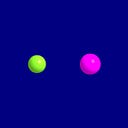Halogen elements-definition-properties-reactivity and uses.
Halogen elements definition .
There are few electronegative as well as non metallic elements ,belongs to 17thgroup in the modern periodic table, are known as halogen elements . Halogen elements are fluorine, chlorine, bromine , iodine and astatine .
Among these , fluorine and chlorine are colourless gaseous elements , bromine is brown color liquid and iodine is violet crystalline solid.
The name ‘halogen’ means salt producing .That is they produced salt , when react with metals .The salts of first three occur in the sea water.
Such as Sodium chloride ( NaCl ) , calcium fluoride ( CaF2 ), silver bromide ( AgBr ) and potassium iodide( KBr )etc .
Halogen elements in periodic table.
According to modern periodic table , group 17 th comprises of five elements , namely , fluorine, chlorine, bromine ,iodine and astatine which do not occur free in the nature , are known as halogen elements .
In deed , fluorine, chlorine, bromine and iodine have closely related properties and are known collectively as the halogen elements.
Halogen elements properties
General electronic configuration of halogen elements are, ns2,np5 .That is the outer most shell of halogen atom contains seven electrons .
Hence halogen element have tendency to gain one more electron to complete their octet .
Consequently, halogen elements are non metal as well as strong electronegative . The electronegativity of halogen elements decrease as we move from top to bottom along a group .
Halogen elements have high affinity for electron, that is have a strong tendency to pick up electrons . For this reason , they exhibits strong oxidizing power .
They can oxidize metal as well as non metal . Although ,the oxidizing power decrease on moving down the group .
Halogen elements reactivity
All the halogen elements react with metals as well as with many non metals to form halides. Fluorine is the most reactive among the halogen elements.
The reactivity decreases when we move from top to bottom along a group .
Another example of halogen elements reactivity are the interaction of halogens with water .
Fluorine react with water fast with explosion to form a mixture of ozone and oxygen .
Chlorine react with water in presence of sunlight and bromine react so much less readily, while iodine scarcely reacts with water .
The chemical reactions of chlorine and bromine elements with water under specific condition is shown below,
All the halogen elements react with hydrocarbons but their reactivity decreases with increase in atomic number .
Fluorine is most reactive towards hydrocarbons. It decompose hydrocarbon and release free carbon atom .
Chlorine under goes substitution reaction with hydrocarbon. Bromine also shows substitution reaction with hydrocarbon but slowly . Iodine react with hydro carbon under condition .
There are a large number of use of halogens elements . Halogen elements used both in organic as well as in inorganic chemistry .
In organic chemistry , halogen elements participate in nucleophilic and in addition reaction to produced a large number of halogen containing compounds .
In inorganic chemistrythere are a huge number of halogenated compounds .Most important compounds of halogen elements are halides , hydracids, oxyacids, pseudo halogen compounds inter halogen compounds etc .
Fluorine is used in different fluorides , which are added to water supplies to protect our tooth decay .
Fluorine is also used to hardiest our enamel to prevent tooth. HF is used in glass industry to prepare different type of glass .
Bromine is in photography,to prepare medicine , in water purification and to prepare pesticides and flame resistant plastics .
Iodine is used mainly in iodometric and iodimetric titration andto prepare medicine ( tincture of iodine) .
Which is the strongest acid among HF, HCl, HBr and HI ?
The acidic strength of halogen acid depends on the degree of ionization in aqueous solution and also bond dissociation energy .
Generally, the degree of dissociation decreases with increasing bond dissociation energy .That is with increasing bond dissociation enthalpy, acidic strength decreases.
Since, the increasing order of bond dissociation energy of halogen acids are ,
Therefore, the increasing acidic order of the above halogen acids are ,
Consequently, among the halogen acids (, HF , HCl , HBr and HI ), HI is the strongest acid .
Summary :
Halogen elements definition .
Halogen elements in periodic table .
Halogen elements properties .
Halogen elements reactivity .
Halogen elements uses .
Which is the strongest acid among HF, HCl , HBr and HI acid ?
Originally published at https://chemizi.blogspot.com.
